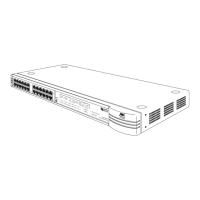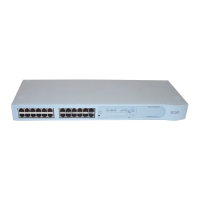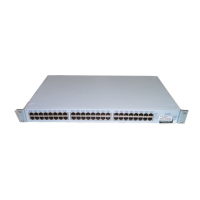174 C
HAPTER
6: V
IRTUAL
LAN
S
(VLAN
S
)
To set up the configuration shown in Figure 34:
1 Configure the VLANs
Use the VLAN Setup page of the web interface to define VLAN 2 on the
Switch 3300. VLAN 1 is the default VLAN and already exists. Do
not
add
the ports to the VLAN using this screen. For more information about
creating a VLAN, see “Configuring VLANs”
on page 83
2 Edit the Port settings
Use the Untagged VLAN listbox on the Port Setup page of the web
interface to:
a
Place ports 1, and 14 in VLAN 1.
b
Place ports 2, 6 and 24 in VLAN 2.
For more information about editing the port setup, see “Configuring a
Port” on page 59.
3 Check the VLAN membership
Return to the VLAN setup page of the web interface to check VLAN 1 and
VLAN 2. The relevant ports should be listed in the VLAN Members listbox.
4 Connect VLAN 1 and VLAN 2
Configure the Layer 3 Module to allow communication between VLANs 1
and 2. For more information, refer to the user documentation supplied
with the Layer 3 Module.
5 Join the switch and hub
Connect port 13 of the Dual Speed Hub 500 to port 1 of the Switch
3300.
Simple Example:
802.1Q Tagged
Connections
In a network with more than one switch where the VLANs are distributed
amongst different switches, you must use 802.1Q tagged connections so
that all VLAN traffic can be passed along the link between the switches.
The example shown in Figure 35
illustrates two Switch 1100 units. Each
switch has endstations in both VLAN 1 and VLAN 2 and each switch has a
server for a VLAN. All endstations in VLAN 1 need to be able to connect
to the server attached to Switch 1 and all endstations in VLAN 2 need to
connect to the server attached to Switch 2.
